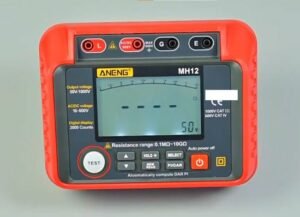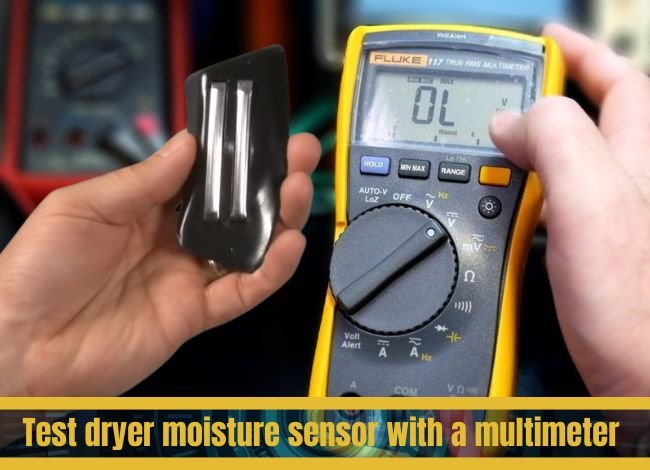Last Updated on September 28, 2022
A multimeter is a type of electric instrument that can perform multiple measurements at once. The megohmmeter is just an upgraded version of the ohmmeter. It can measure insulation resistance in various electronic devices, household appliances, electrical circuits, etc.
Many folks are just confused about how these two gadgets operate. And to clear up any doubt, we go over all the specifications of the megohmmeter and multimeter.
Megohmmeter: Best for insulation testing
 A megohmmeter is primarily used to check that a circuit is functioning properly and that there is no danger of an electric shock or element damage. This small apparatus contains an ohm reading meter and a hand-driven D.C. generator.
A megohmmeter is primarily used to check that a circuit is functioning properly and that there is no danger of an electric shock or element damage. This small apparatus contains an ohm reading meter and a hand-driven D.C. generator.
You must be aware of its underlying structure if you wish to understand how it functions. There are two coils within that connect to the center shaft that pivots. And they are joined with flexible LEDs and free to spin around a C-shaped core. You may determine whether the generator is operating properly by reading and rotating a moving point.
And the major purpose of these two coils is to gauge the circuit’s resistance. Both coils refuse to receive the torque from the instrument point when any unidentified resistance is supplied to the test terminals from the line and earth. Scale discovered this problem from there and displayed the resistance on the megger’s screen.
Multimeter: All-in-one electrical measurement tool
 Now let’s speak about the multimeter, another portable gadget. However, this tool may do various tasks, including measuring electrical quantities such as current, voltage, resistance, and others. Volt-ohm meters, or VOMs, are occasionally used in place of multimeters. Not only that, but this equipment is also used to magnify transistors, diodes, capacitors, and other minor electrical components in a circuit.
Now let’s speak about the multimeter, another portable gadget. However, this tool may do various tasks, including measuring electrical quantities such as current, voltage, resistance, and others. Volt-ohm meters, or VOMs, are occasionally used in place of multimeters. Not only that, but this equipment is also used to magnify transistors, diodes, capacitors, and other minor electrical components in a circuit.
Megohmmeter vs. Multimeter: What are the Key differences?
There are some common differences you can find in both of these devices. And the first one is there are many common names like many people know megohmmeter as megger or shaking table. The main difference between these two tools are given below:
Measuring unit:
However, a multimeter is made to measure anything other than a circuit. Voltage, resistance, current, etc., may all be measured with a multimeter. This gadget also magnifies the system’s transistors, diodes, and other components.
Megger or megohmmeter is used to determine insulation resistance. Megger doesn’t have as many measuring possibilities, either. That is the primary distinction between these two tools. For any electrician, both are crucial and helpful.
Construction differences:
You could detect a few differences in the devices’ structure. Meggers typically have three terminals: line, guard, and earth, whereas multimeters usually have two: negative and positive.
Usages:
These two devices are used for other applications as well. Similar to the megohmmeter, which is mostly used for PCBs and other low-voltage appliances. However, there are other ways to use a multimeter to diagnose electrical board problems.
Faulty value range:
There is an arrangement for determining faulty value from the circuit. And for Megohommeter, it’s above 0.5MΩ. While a megohmmeter may be used for high-voltage applications, a multimeter is best suited for checking low voltage from circuits. But the accuracy of the multimeter is less than megger.
Price Comparison:
As you know, a multimeter has more function than a megohmmeter, but its price is surprisingly lower. Because megger is mainly designed for use in heavy electric load areas. That’s why the price is higher than any multimeter.
Final Thoughts
The differences between a multimeter and a megohmmeter are very substantial. To measure electrical units from a circuit, both are crucial. However, a megohmmeter produces high voltage and is hazardous to touch accidentally since it might shock you if you want an accurate measurement while maintaining safety. However, this problem does not exist in the multimeter.


